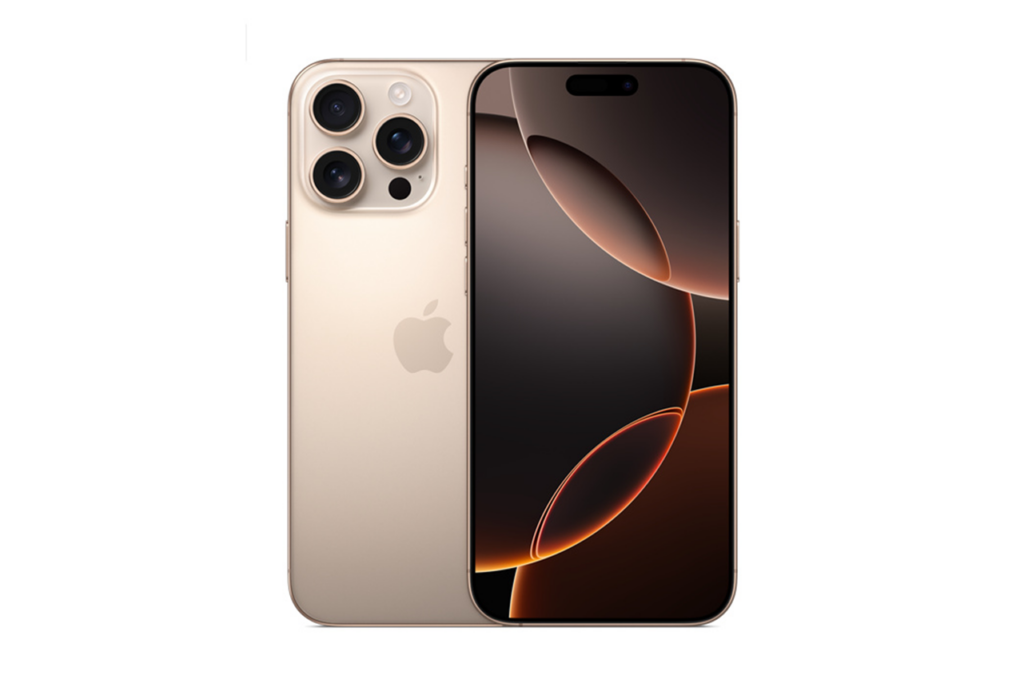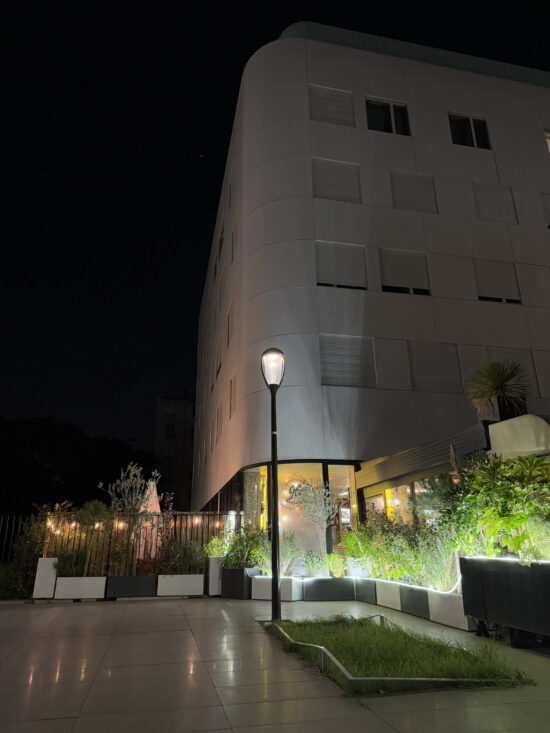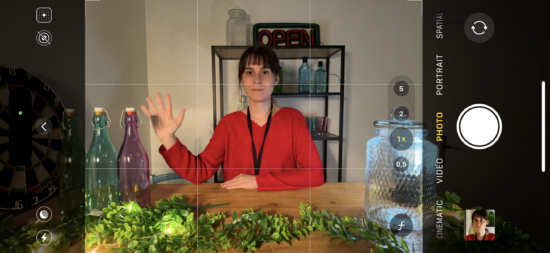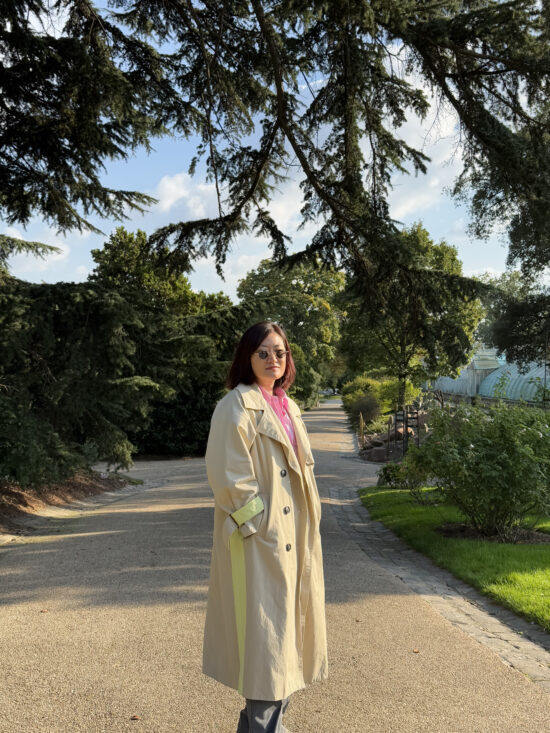We put the Apple iPhone 16 Pro Max through our rigorous DXOMARK Camera test suite to measure its performance in photo, video, and zoom quality from an end-user perspective. This article breaks down how the device fared in a variety of tests and several common use cases and is intended to highlight the most important results of our testing with an extract of the captured data.
Overview
Key camera specifications:
- Primary: 48MP sensor, quad pixels, 24mm equivalent f/1.78-aperture lens, Dual Pixel AF, OIS
- Ultra-wide: 48MP sensor, 13mm equivalent f/2.2-aperture lens, Dual Pixel AF
- Tele: 12MP sensor, 120 mm equivalent f/2.8-aperture lens, Dual Pixel AF
- A18 Pro chipset
Scoring
Sub-scores and attributes included in the calculations of the global score.
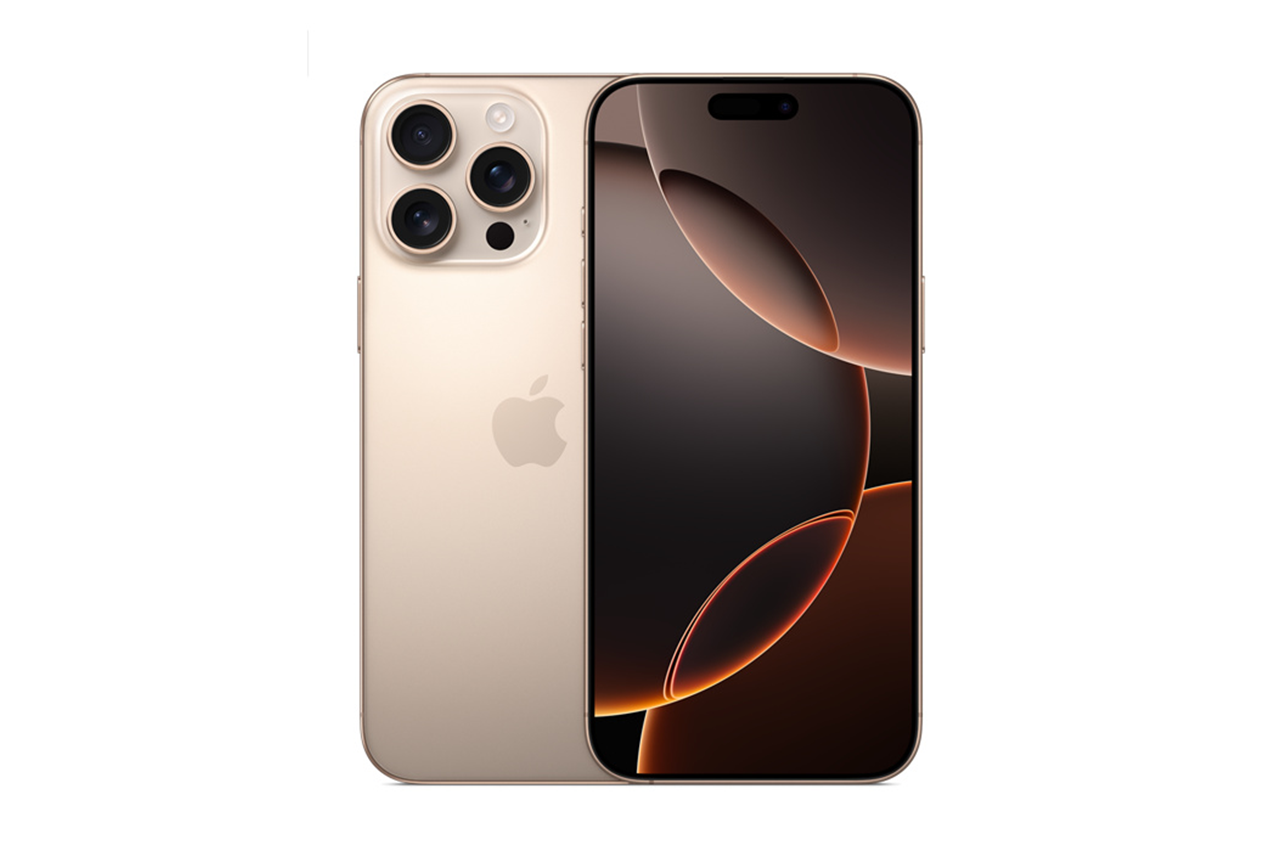
Apple iPhone 16 Pro Max


Use cases & Conditions
Use case scores indicate the product performance in specific situations. They are not included in the overall score calculations.
Outdoor
Photos & videos shot in bright light conditions (≥1000 lux)
Indoor
Photos & videos shot in good lighting conditions (≥100lux)
Lowlight
Photos & videos shot in low lighting conditions (<100 lux)
Friends & Family
Portrait and group photo & videos
Pros
- Best video mode on a smartphone
- Excellent for taking pictures and videos of friends and family
- Wide dynamic range across the entire zoom range
- Accurate white balance and natural color rendering
- Excellent levels of detail and texture in bright light
- Fast and accurate autofocus
- Effective video stabilization
Cons
- Inconsistent detail across zoom range, lack of detail in ultra-wide photos
- Narrow depth of field results in out-of-focus background subjects in group shots
- Unwanted artifacts, including flare, ghosting, ringing, and aliasing
Like its predecessors, the latest Apple flagship, the iPhone 16 Pro Max, did very well in the DXOMARK Camera tests, achieving an overall score that puts it among the very best smartphones for imaging. It shone particularly in video mode where it delivered better results than any other mobile device we have tested. It significantly surpasses its main competitor, the Samsung Galaxy S24 Ultra, in this area and in photo as well.
Even though the primary camera hardware on the Pro Max remained mostly unchanged over the previous model, Apple still managed to make improvements in a range of image quality and camera performance areas. In video mode, the new iPhone again managed to grab the top spot in our ranking, thanks to outstanding test results across the board at 4K resolution and with the 60fps variable frame rate. In addition, the Apple flagship comes with a new 4K /120fps mode and a range of “Pro” modes that allow for customization of settings and are, in this form, not available on competing devices. In photo mode, the camera benefited from improved processing and new editing options. We particularly noticed an improved color performance at default settings.
While the overall rate of improvement in camera performance appears to be slower than in previous years and compared to the competition, users of the new iPhone benefit from the introduction of new imaging features, such as the Undertones and Mood photographic styles, which are not covered by the DXOMARK Camera test protocol, but are designed to address real user needs.
While the 16 Pro Max has noticeably improved in terms of both photo and video, this is not the case for zooming. Our testers did not notice any particular texture improvements with the new 48MP ultra-wide camera when compared to the 15 Pro Max. There was also still a lack of image quality consistency across the tele zoom range, with a noticeable drop in detail at tele settings between 2x and 5x.
In our tests, we found the iPhone 16 Pro Max to be an excellent device for both capturing portraits and the decisive moment in scenes with motion. The camera delivered excellent skin tones as well as high levels of detail on faces. Zero shutter lag technology allowed for instant capture when the shutter button is pressed. Viewing the iPhone 16 Pro Max images on an HDR screen made them look even more immersive and beautiful. On the downside, a limited depth of field meant that in group shots faces at the back could be slightly out of focus.
The iPhone 16 Pro Max comes with an effective automatic night mode, that allows for the capture of bright pictures with a wide dynamic range, even in very low-light scenes. On the downside, image noise was more intrusive, and detail levels were lower in night shots than on the best competitors, such as the Huawei Pura 70 Ultra, factors that can be relevant for exigent photographers.
Low-light video performance, on the other hand, was outstanding. Overall, the Apple iPhone 16 Pro Max is the best device we have tested to date for filming in challenging low-light conditions, capturing almost noise-free footage with very high levels of detail.
Test summary
About DXOMARK Camera tests: DXOMARK’s Camera evaluations take place in laboratories and in real-world situations using a wide variety of subjects. The scores rely on objective tests for which the results are calculated directly by measurement software on our laboratory setups, and on perceptual tests in which a sophisticated set of metrics allow a panel of image experts to compare aspects of image quality that require human judgment. Testing a smartphone involves a team of engineers and technicians for about a week. Photo, Zoom, and Video quality are scored separately and then combined into an Overall score for comparison among the cameras in different devices. For more information about the DXOMARK Camera protocol, click here. More details on smartphone camera scores are available here. The following section gathers key elements of DXOMARK’s exhaustive tests and analyses. Full performance evaluations are available upon request. Please contact us on how to receive a full report.
Photo
Apple iPhone 16 Pro Max
169
For scoring and analysis, DXOMARK engineers capture and evaluate more than 2,600 test images both in controlled lab environments and in outdoor, indoor and low-light natural scenes, using the camera’s default settings. The photo protocol is designed to take into account the main use cases and is based on typical shooting scenarios, such as portraits, family, and landscape photography. The evaluation is performed by visually inspecting images against a reference of natural scenes, and by running objective measurements on images of charts captured in the lab under different lighting conditions from 1 to 1,000+ lux and color temperatures from 2,300K to 6,500K.
In our tests, the Apple iPhone 16 Pro Max proved to be one of the best devices for capturing HDR scenes and achieved the best results to date in the color category. Apple has managed to further improve its advanced HDR image format, expanding the dynamic range while keeping HDR-related artifacts, such as ghosting, well under control. This said, the new iPhone lagged slightly behind the best in class in terms of texture/noise trade-off. It is also worth mentioning that, unlike more recent Huawei flagship phones, the iPhone 16 Pro Max does not feature a hardware (or physical) variable aperture. It can therefore not widen the depth-of-field in scenes where this would make sense, for example, group shots with subjects at different distances from the camera.
Images captured with the Apple iPhone 16 Pro Max looked stunning – brighter and more vivid than ever before – when viewed in the iPhone Photo App on the device display, or on a MacBook running macOS Sequoia. However, when using a display and player that does not support Apple’s HDR format, the effect was not quite the same, as images are displayed as a standard JPG file, without the HDR effect. Please note that the Google Pixel 9 Pro XL and the Samsung Galaxy S24 Ultra sample images will be correctly displayed on this page when using a display and browser that support Ultra HDR formats. This is not the case for photos taken with Apple and Huawei devices.
Please note that the iPhone 16 Pro Max offers Raw file capture in DNG format, which allows for adjustment of some image parameters in post-production. However, Raw capture is not covered by our test protocol and therefore not covered in this article.
Close-Up
Like last year’s iPhone, the iPhone 16 Pro Max comes with an automatic macro mode that uses the camera’s ultra-wide module. In our tests, close-up image quality and performance were similarly good as on the predecessor 15 Pro Max. When compared to the Huawei Pura 70 Ultra, which deploys its tele module in macro mode, the iPhone’s image results lagged slightly behind, with more intrusive image noise and less intense background blur, which some macro photographers might actually prefer.

Exposure
Apple iPhone 16 Pro Max
130
Exposure is one of the key attributes for technically good pictures. The main attribute evaluated is the brightness of the main subject through various use cases such as landscape, portrait, or still life. Other factors evaluated are the contrast and the dynamic range, eg. the ability to render visible details in both bright and dark areas of the image. Repeatability is also important because it demonstrates the camera's ability to provide the same rendering when shooting several images of the same scene.
In our tests, the iPhone 16 Pro Max offered good target exposure, with better contrast and a wider dynamic range than the previous generation. The latest Apple flagship is now among the very best devices for exposure.
Apple has managed to further improve the HDR processing of its still images, achieving a wide dynamic range, with natural detail preservation in bright and dark areas while keeping artifacts well under control.
On the display side, most competitors offer some form of HDR rendering, with their proprietary HDR format. They all make use of the headroom for background highlights, but differ in the usage on the scene’s main subject. As seen below, Apple and Huawei arguably emphasize the scene’s main subject, compared to Samsung, on this specific scene.
Color is one of the key attributes for technically good pictures. The image quality attributes analyzed are skin-tone rendering, white balance, color shading, and repeatability. For color and skin tone rendering, we penalize unnatural colors but we respect a manufacturer's choice of color signature.
The iPhone 16 Pro Max is the new class leader in the color category, thanks to excellent and stable color rendering across all test conditions.
In addition, the device offers a wide range of options for color customization, which can be applied before or after capture. This feature is not covered by our test protocol but is still worth mentioning as it has the potential to meet a real user need, allowing for the fine-tuning of skin-tone rendering in line with personal preferences.
Users can choose from two families of color options:
- Undertones allows for subtle adjustment of skin tones but also affects the rest of the scene. Options include cool rose, gold, rose gold, amber, and neutral, all of which can be fine-tuned using a pad-like color control on the display.
- Mood is designed to change the mood of a scene. It is applied in the same way as Undertones but has a stronger impact. Options include Vibrant, Natural, Luminous, Dramatic, Quiet, Cozy and Ethereal. Like for Undertones, the same images can be edited and saved multiple times with various Moods applied.


Autofocus
Apple iPhone 16 Pro Max
125
Autofocus tests concentrate on focus accuracy, focus repeatability, shooting time delay, and depth of field. Shooting delay is the difference between the time the user presses the capture button and the time the image is actually taken. It includes focusing speed and the capability of the device to capture images at the right time, what is called 'zero shutter lag' capability. Even if a shallow depth of field can be pleasant for a single subject portrait or close-up shot, it can also be a problem in some specific conditions such as group portraits; Both situations are tested. Focus accuracy is also evaluated in all the real-life images taken, from infinity to close-up objects and in low light to outdoor conditions.
In our tests, the latest iPhone offered a zero shutter lag in most conditions, resulting in instant capture of the scene as the shutter button is pressed. This made it quite easy to capture the decisive moment in moving scenes. Some rivals, for example, the Samsung Galaxy S24 Ultra, do not offer a zero shutter lag in high-contrast scenes, making capturing scenes with motion a much more difficult task.
This said, unlike some rivals, for example, the Google Pixel 9, the iPhone was not capable of instant capture in very low light conditions.
Like the iPhone 15 generation, the latest Apple device, is not capable of adapting depth of field to scene content. Some rivals are a step ahead of Apple in this respect. The Google Pixel 9 Pro XL comes with an AI feature that is capable of sharpening detail in slightly out-of-focus background faces in group shots. Huawei’s latest flagship features a variable aperture and automatically stops down if it makes sense for a particular scene. This widens the depth of field and maintains better focus on all faces in group portraits.

Texture
Apple iPhone 16 Pro Max
125
Texture tests analyze the level of details and the texture of subjects in the images taken in the lab as well as in real-life scenarios. For natural shots, particular attention is paid to the level of details in the bright and dark areas of the image. Objective measurements are performed on chart images taken in various lighting conditions from 1 to 1000 lux and different kinds of dynamic range conditions. The charts used are the proprietary DXOMARK chart (DMC) and the Dead Leaves chart.
Our testers found the 16 Pro Max to be one of the very best smartphones for capturing detail. This is especially true in daylight or under bright artificial light, and most noticeable when looking closely at fine skin texture in close-up portraits. Skin rendering in portraits was very natural, with subtle local contrast and nicely captured finest detail, for example in the hair, on the lips or wrinkles.
In low light, we observed some loss of detail. Like the predecessor iPhone 15 Pro Max, the new model uses pixel binning in dim conditions, producing lower resolution (12MP) image files.

Noise
Apple iPhone 16 Pro Max
117
Noise tests analyze various attributes of noise such as intensity, chromaticity, grain, structure on real-life images as well as images of charts taken in the lab. For natural images, particular attention is paid to the noise on faces, landscapes, but also on dark areas and high dynamic range conditions. Noise on moving objects is also evaluated on natural images. Objective measurements are performed on images of charts taken in various conditions from 1 to 1000 lux and different kinds of dynamic range conditions. The chart used is the Dead Leaves chart and the standardized measurement such as Visual Noise derived from ISO 15739.
Image noise is one of the most important areas for improvement on the iPhone 16 Pro Max. In our tests, grainy luminance noise was noticeable across all test conditions. In bright light and at small viewing sizes noise was not much of an issue but when taking images in low light and/or viewing them on a larger display, noise could become quite intrusive. Most of the iPhone’s direct rivals are capable of better managing image noise, with almost noise-free areas of plain color and still good detail in textured elements of the scene.

Artifacts
Apple iPhone 16 Pro Max
82
The artifacts evaluation looks at lens shading, chromatic aberrations, geometrical distortion, edges ringing, halos, ghosting, quantization, unexpected color hue shifts, among others type of possible unnatural effects on photos. The more severe and the more frequent the artifact, the higher the point deduction on the score. The main artifacts observed and corresponding point loss are listed below.
Image artifacts were overall well managed on the iPhone 16 Pro Max. Our testers still observed some flare and ghosting effects, but both artifacts were slightly less noticeable than on last year’s flagship.
Bokeh
Apple iPhone 16 Pro Max
85
Bokeh is tested in one dedicated mode, usually portrait or aperture mode, and analyzed by visually inspecting all the images captured in the lab and in natural conditions. The goal is to reproduce portrait photography comparable to one taken with a DLSR and a wide aperture. The main image quality attributes paid attention to are depth estimation, artifacts, blur gradient, and the shape of the bokeh blur spotlights. Portrait image quality attributes (exposure, color, texture) are also taken into account.
Like its predecessor, the iPhone 16 Pro Max produced pleasant image results in bokeh mode, with a nice blur effect on the background as well as pretty good depth simulation and subject isolation, especially when compared to the Samsung Galaxy S24 Ultra. Still, the latest Apple flagship was not quite up there with the very best in terms of bokeh simulation, due to the shape and contrast of spotlights in the background.
By default, the iPhone uses a 2x zoom setting in bokeh mode. Please note that the device also lets you switch to a 1x and 5x tele zoom in portrait mode. This is not covered by the DXOMARK Camera test protocol, however. At the longest setting, the tele module is used for capture.
Preview tests analyze the image quality of the camera app's preview of the image, with particular attention paid to the difference between the capture and the preview, especially regarding dynamic range and the application of the bokeh effect. Also evaluated is the smoothness of the exposure, color and focus adaptation when zooming from the minimal to the maximal zoom factor available. The preview frame rate is measured using the LED Universal Timer.
Apple devices have historically been excellent in the preview category, and the latest flagship is no different. In our tests, the iPhone 16 Pro Max preview image on the display was very close to the final capture. In addition, the transitions between camera modules when zooming in or out were seamless and smooth.
In terms of camera hardware, not much has changed on the iPhone 16 Pro Max over the previous model, but there is a new pressure-sensitive Camera Control button on the edge of the device. It launches the camera app and allows you to change a range of camera settings by sliding over it with your fingertip or pressing. For example, you can switch between camera modules and zoom, and adjust the tones as well as the exposure. You can also select the new Mood and Undertone settings mentioned previously in this article. The button is designed to access the camera more quickly and to improve the camera user interface. It does a good job at it, but users will have to get used to the new control in order to take full advantage of it.
Zoom
Apple iPhone 16 Pro Max
169
DXOMARK engineers capture and evaluate over 400 test images in controlled lab environments and in outdoor, indoor, and low-light natural scenes, using the camera’s default settings and pinch zoom at various zoom factors from ultra wide to very long-range zoom. The evaluation is performed by visually inspecting the images against a reference of natural scenes, and by running objective measurements of chart mages captured in the lab under different conditions from 20 to 1000 lux and color temperatures from 2300K to 6500K.
The iPhone 16 Pro Max comes with a new 48MP ultra-wide module. The 5x tele module is now available on both the Pro and Pro Max versions of the iPhone. In our tests, we did not see any major image quality improvements compared to last year’s models. At close-range tele settings, between the primary and tele camera modules, a lack of processing and image fusion still means the iPhone is not quite up there with the very best.

Wide
Apple iPhone 16 Pro Max
122
These tests analyze the performance of the ultra-wide camera at several focal lengths from 12 mm to 20 mm. All image quality attributes are evaluated, with particular attention paid to such artifacts as chromatic aberrations, lens softness, and distortion. Pictures below are an extract of tested scenes.
Despite a nominally higher 48MP pixel count on the ultra-wide camera, our testers could not observe any improvements in detail, neither in the lab nor in real-life scenes, at ultra-wide settings. Image files at 48MP are only recorded when using the device’s proRAW mode. On the plus side, in most test scenes, our experts found dynamic range to be improved over the iPhone 15 Pro Max.

Tele
Apple iPhone 16 Pro Max
128
All image quality attributes are evaluated at focal lengths from approximately 40 mm to 300 mm, with particular attention paid to texture and detail. The score is derived from a number of objective measurements in the lab and perceptual analysis of real-life images.
The 16 Pro Max comes with the same 5x tele camera module as last year’s 15 Pro Max. We were hoping for some improvements at intermediate zoom factors, but image quality, especially image detail, remained inconsistent across the tele zoom range, due to a lack of adequate hardware or software solutions. In our tests, there was a noticeable drop-off in detail after zooming in more than 2x, until the tele camera takes over at 5x. Competitors like Google’s Pixel 9 Pro XL use super-resolution algorithms or image fusion methods to produce more consistent image detail along the tele zoom range.
The iPhone 16 Pro Max lets you switch between a 28mm and 35mm equivalent focal length by tapping on the 1x button in the camera app. The feature, called Fusion Camera, is interesting from a user interface perspective and provides an additional standard focal length that is widely used in many types of photography. Examining the images, there is no loss of detail, with the 35mm equivalent shots showing even better fine detail in our tests. This suggests the device is using more than just a simple crop in order to achieve the desired field of view.
DXOMARK engineers capture and evaluate more than 2.5 hours of video in controlled lab environments and in natural low-light, indoor and outdoor scenes, using the camera’s default settings. The evaluation consists of visually inspecting natural videos taken in various conditions and running objective measurements on videos of charts recorded in the lab under different conditions from 1 to 1000+ lux and color temperatures from 2,300K to 6,500K.
The Apple iPhone 16 Pro Max’s video mode was tested at 4K resolution, a 60fps variable frame rate, and in Dolby Vision format. These settings delivered exceptional results, earning Apple’s latest flagship the top position in our video ranking. Video exposure and color accuracy remained highly consistent across a range of recording conditions, and the texture/noise trade-off was the best we’ve seen on any device tested to date. The autofocus system performed reliably, even in low light, and video stabilization ranked among the best in the market.
Not only did the iPhone 16 Pro Max deliver the best video quality in its standard and default video modes, it also offered additional features that will delight video professionals, such as several proRes (Log and HDR) modes. There is also a new 4K/120fps mode that looks like a great option for slow-motion video, at least when recording in good light. When using the fast frame rate under indoor lighting or in low light, there was noticeably more noise and flickering than at 60fps.
Like on the iPhone 15 generation and other devices with HDR video capability, an HDR-compatible display is required to fully take advantage of the enhanced HDR footage. It is important to note that YouTube will only show the original HDR version of a clip if viewed on an HDR screen. Otherwise, a compressed SDR version will be displayed.

Exposure
Apple iPhone 16 Pro Max
116
Exposure tests evaluate the brightness of the main subject and the dynamic range, eg. the ability to render visible details in both bright and dark areas of the image. Stability and temporal adaption of the exposure are also analyzed.
Like its predecessors, the iPhone 16 Pro Max ranks among the very best devices for video exposure, thanks to its well-managed HDR format, one of the widest dynamic ranges in the business, and very smooth exposure transitions. This said, our testers noticed slightly more intrusive tone mapping instabilities than on the 15 Pro Max.
Image-quality color analysis looks at color rendering, skin-tone rendering, white balance, color shading, stability of the white balance and its adaption when light is changing.
Like in photo mode, the iPhone 16 Pro Max delivered an excellent performance for video color. Colors and skin tones were natural across all test conditions, with a pleasantly warm cast in low light. In addition, color transitions during scene changes were managed very well.
Please note that Apple’s new photographic styles are also available in video mode.

Autofocus
Apple iPhone 16 Pro Max
120
Video focus performance was very close to last year’s model, with excellent tracking as well as fast and smooth transitions. During our tests, the iPhone 16 Pro Max rarely lost focus on the main subject of a video scene. The field of view adjustment that comes with focus changes was usually well-corrected but still slightly noticeable. The Huawei Pura 70 Ultra did slightly better in this respect.

Texture
Apple iPhone 16 Pro Max
118
Texture tests analyze the level of details and texture of the real-life videos as well as the videos of charts recorded in the lab. Natural videos recordings are visually evaluated, with particular attention paid to the level of details in the bright and areas as well as in the dark. Objective measurements are performed of images of charts taken in various conditions from 1 to 1000 lux. The charts used are the DXOMARK chart (DMC) and Dead Leaves chart.
The iPhone 16 Pro Max was able to improve over its predecessor in terms of detail rendering in video. Detail in video clips looked natural and was free of artifacts. Improvements were most noticeable in low light. This is particularly notable as the 16 Pro Max was tested at 60fps, which makes detail rendering more challenging than at slower frame rates.
Noise tests analyze various attributes of noise such as intensity, chromaticity, grain, structure, temporal aspects on real-life video recording as well as videos of charts taken in the lab. Natural videos are visually evaluated, with particular attention paid to the noise in the dark areas and high dynamic range conditions. Objective measurements are performed on the videos of charts recorded in various conditions from 1 to 1000 lux. The chart used is the DXOMARK visual noise chart.
In our video tests, the new Apple flagship achieved the lowest noise levels of all devices tested to date. Noise was pretty much non-existent when recording in bright light or under typical indoor conditions. In low light, it was still pretty acceptable. Overall, the 16 Pro Max also offered the best detail/noise trade-off in video that we have seen so far.
Stabilization evaluation tests the ability of the device to stabilize footage thanks to software or hardware technologies such as OIS, EIS, or any others means. The evaluation looks at residual motion, smoothness, jello artifacts and residual motion blur on walk and run use cases in various lighting conditions. The video below is an extract from one of the tested scenes.
In our tests, the iPhone 16 Pro Max provided very good video stabilization that was on a similar level to the 15 Pro Max. Camera shake when hand-holding the camera was usually well compensated for, and sharpness was very consistent across the individual video frames.

Artifacts
Apple iPhone 16 Pro Max
86
Artifacts are evaluated with MTF and ringing measurements on the SFR chart in the lab as well as frame-rate measurements using the LED Universal Timer. Natural videos are visually evaluated by paying particular attention to artifacts such as aliasing, quantization, blocking, and hue shift, among others. The more severe and the more frequent the artifact, the higher the point deduction from the score. The main artifacts and corresponding point loss are listed below.
Like on the iPhone 15 Pro Max, a fast 60fps frame rate contributed to a reduction of unwanted artifacts, particularly the judder effect, which can occur during panning shots. Our testers observed other common artifacts, such as aliasing, flare, and ringing, in some scenes, but their impact on overall quality was usually fairly small. Flare could be quite noticeable in some scenes with the sun, or a strong light source inside the frame, but this is common to most flagship devices.


